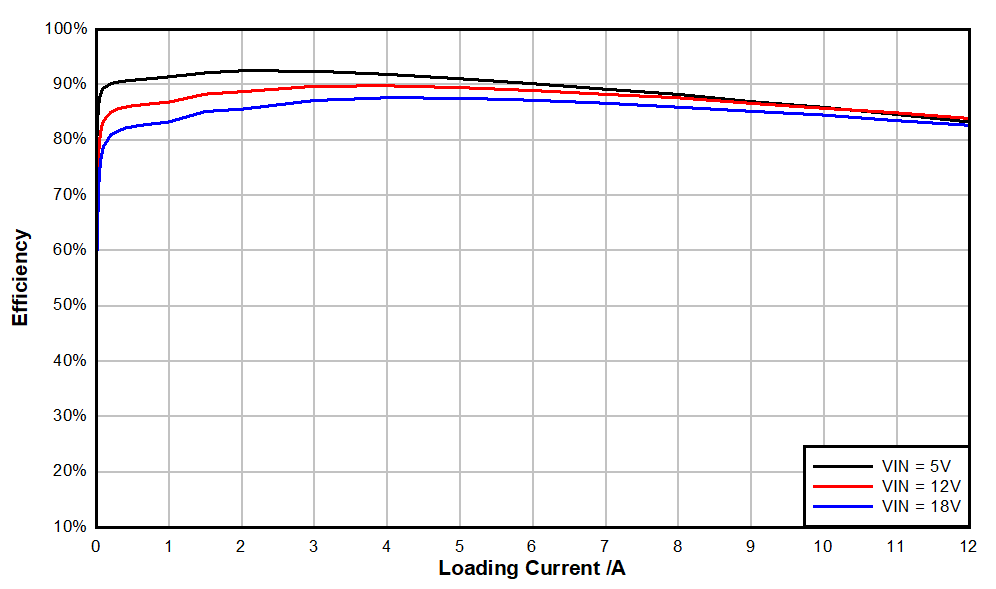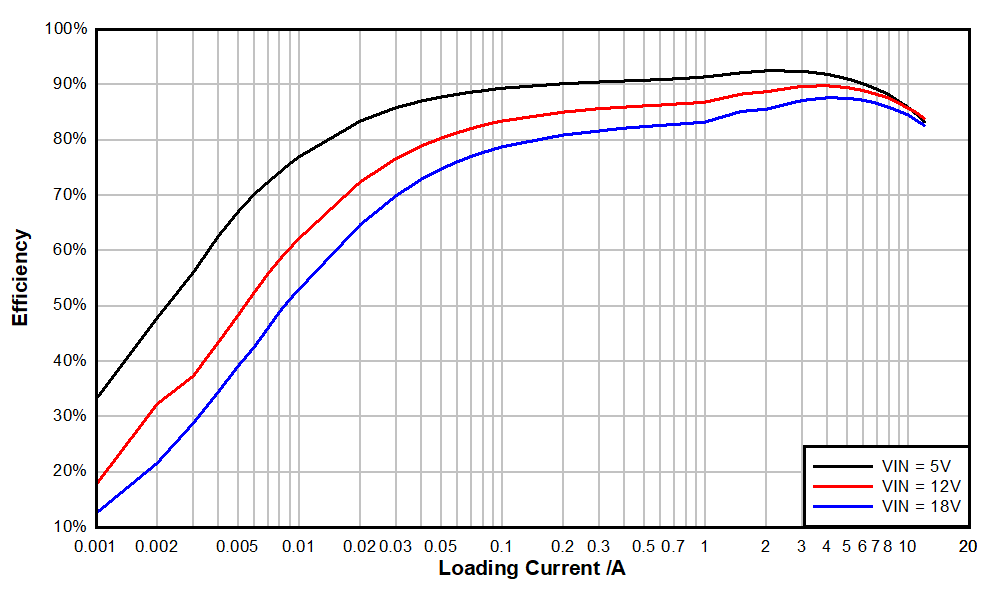SLVUBJ0B January 2019 – June 2021
4.2 Efficiency
Figure 4-1 shows the efficiency for the TPS56C230EVM in 500kHz/Eco mode. The ambient temperature is 25 °C.
 Figure 4-1 TPS56C230EVM Efficiency at 500-kHz/Eco mode
Figure 4-1 TPS56C230EVM Efficiency at 500-kHz/Eco modeFigure 4-2 shows the efficiency at light loads for the TPS56C230EVM using a semi-log scale. The ambient temperature is 25 °C.
 Figure 4-2 TPS56C230EVM Light Load Efficiency at 500-kHz/Eco Mode
Figure 4-2 TPS56C230EVM Light Load Efficiency at 500-kHz/Eco ModeThe efficiency may be lower at higher ambient temperature, due to temperature variation in the drain-to-source resistance of the internal MOSFET.